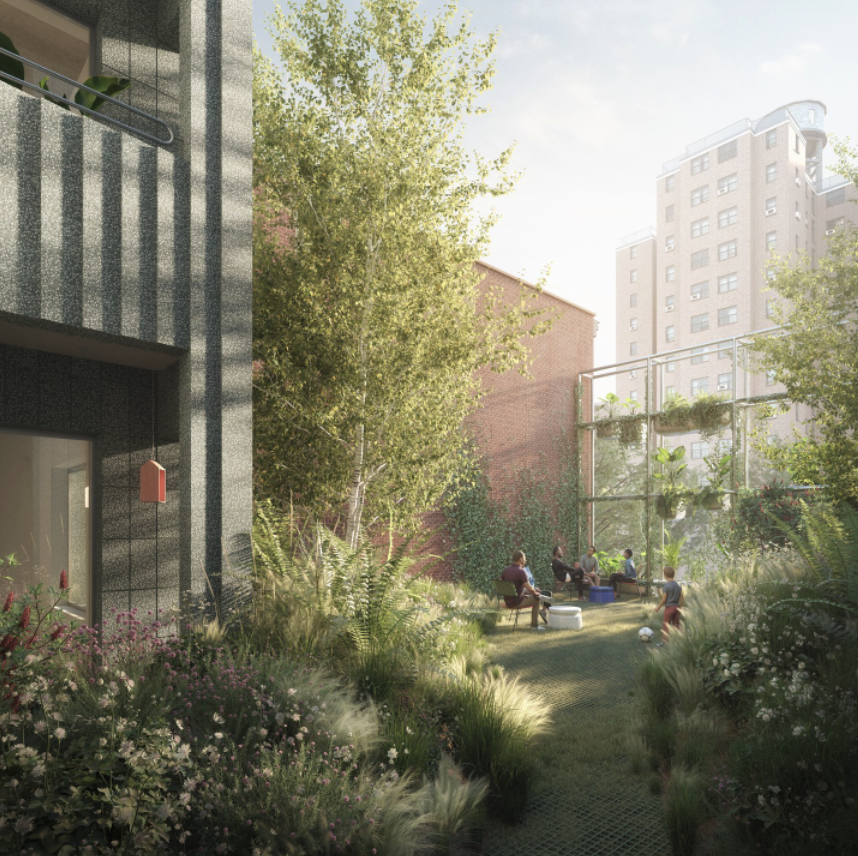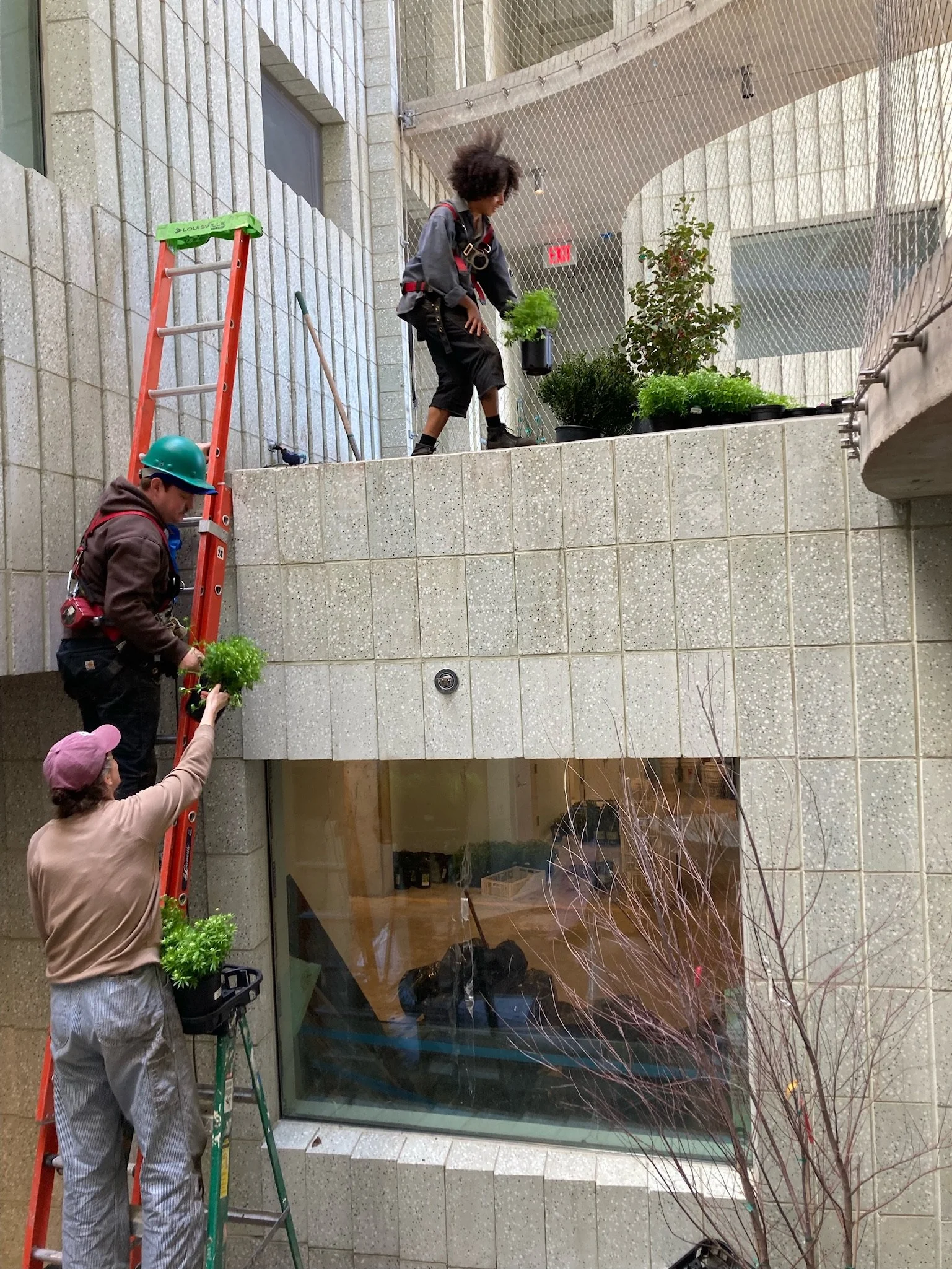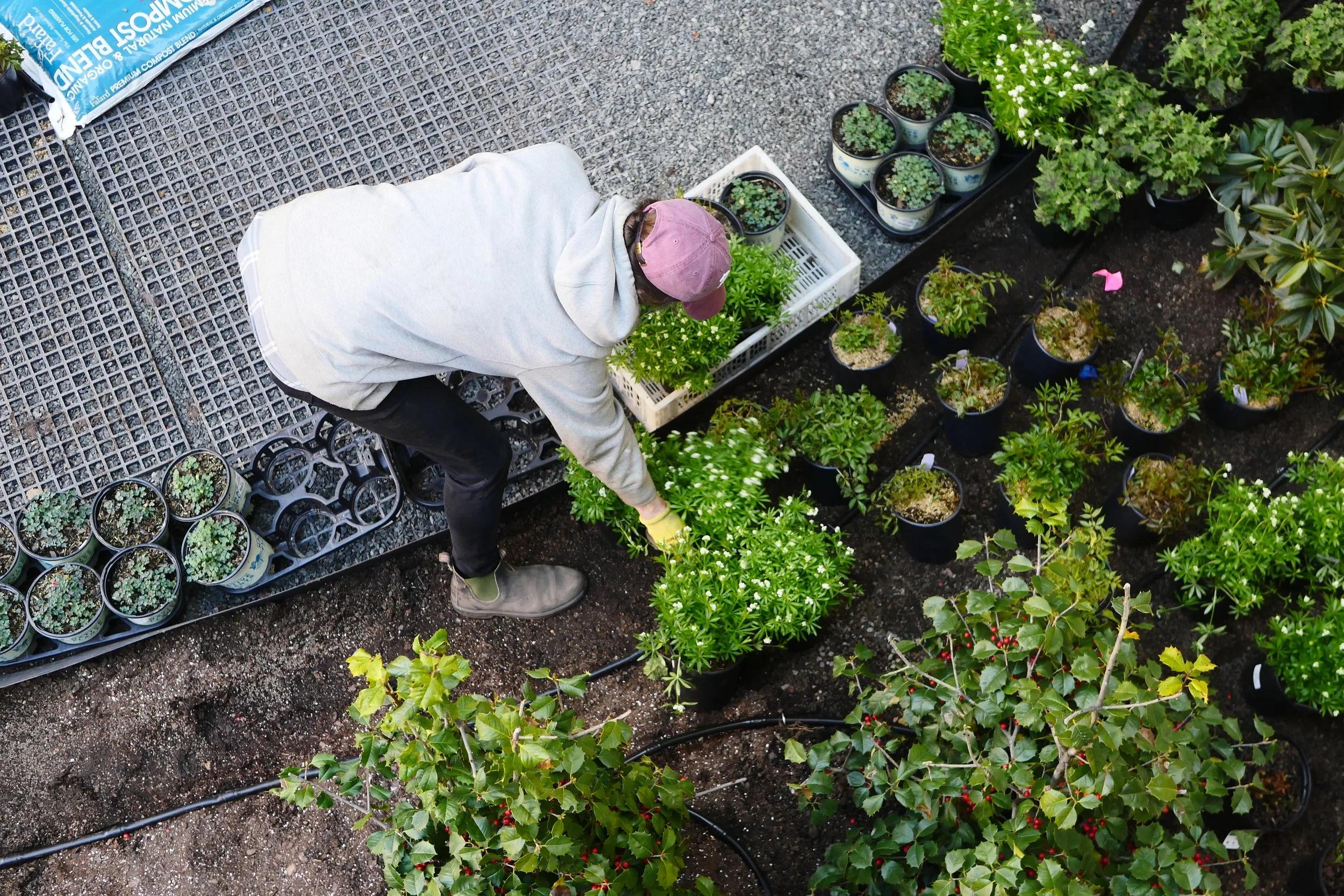INNOVATIONS IN GREEN ROOF TECHNOLOGY: INSTALLING THE US’ FIRST COMMERCIAL POLDER ROOF
We’re always on board with trying out new green roof and stormwater management technologies, so we jumped at the chance to install the first commercial Metro Polder Roof in the US. This Polder Roof by Metropolder is one of many green infrastructure features we installed at 450 Warren – a new residential development in Gowanus, Brooklyn developed by Tankhouse and designed by SO-IL with collaboration from Gowanus Canal Conservancy and us, Brooklyn Grange. Read on to follow the process!Rendering courtesy of 450 Warren
A NEW PARADIGM FOR URBAN LIVING
When Tankhouse approached us in 2019, the world was undoubtedly a different place. The pandemic marked an incredible change in how we navigate every aspect of our daily lives, and with over 4 billion people living in cities, living conditions for urbanites were under re-examination globally. This of course had an indelible impact on the construction and real estate sector. When we reflect on the vision for 450 Warren, this project is colored in a particularly unique light. Prior to 2020, this residential development sought to create a new paradigm for urban living, prioritizing the design of outdoor space just as much as the indoors. With the incorporation of multiple green roofs serving as courtyards, outdoor corridors, outdoor stairwells, and bridges, residents are fully immersed in the outdoors even after stepping into the building. At Brooklyn Grange, we’re constantly investigating how urbanites can be immersed with our natural world, so this project was particularly appealing to us well before the demands brought on by COVID.
Left to Right: (1) Inner building bridge, photo courtesy of Tankhouse. (2) Atrium entrance, rendering courtesy of Tankhouse. (3) Decorative greenspaces on the second floor of the building
LAYING DOWN THE (ROOF) WORK
“Working with the Metropolder team was a really educational and rewarding experience for us. Their green roof system and technology expands the potential of what we have come to understand as a traditional green roof and its ability to mitigate stormwater. After Hurricane Ida, it’s become even more clear that we need to be installing not only more green roofs to help our city absorb rainwater, but to be installing this kind of system specifically, to increase the amount of rainwater green roofs can hold.” -Michelle Cashen, Director of Design/Build at Brooklyn Grange
At the end of 2021, our Design/Build began laying down the foundation of the two green roofs, one of which featured the Polder roof by MetroPolder. While the Polder system is not too dissimilar from a traditional green roof, the added technology allows the Polder green roof to harvest excess rainwater and dispense the surplus at a later time.
A traditional green roof system usually has a ¼” to 2” of drainage space beneath the soil where stormwater is collected once the soil is fully saturated. To compare, the Polder roof has 4” of space. The added capacity of the “drainage void” a Polder roof acts as a storage unit for unabsorbed stormwater. In addition to the extra space, the Polder Roof uses a “Sm^rt Drop” which in essence, serves as a dam preventing stored water from entering the city’s sewage system. Using its smart sensors, the Sm^rt Drop releases water at strategic times, to irrigate the green roof and/or drain into greywater systems depending on weather conditions and needs of the plants.
Our Design/Build team had the pleasure of working with the MetroPolder team who flew out all the way from the Netherlands to support the first commercial buildout in the United States. It’s no surprise that a country known as the land of water has much knowledge to dispense on stormwater management. We learned a ton and look forward to working with them to bring more Polder roofs to New York City.
Left to Right: (1) Rolling out waterproof membrane. (2) Installing Sm^rt Drop system. (3) Laying down the drainage/storage layer.
SENDING SOIL INTO THE SKY
By early March, the roofs were ready for soil. We worked closely with our pals at Downes to blow 85 cubic yards of soil onto the two of the green roofs at 450 Warren. Downes has helped us blow soil onto every green roof we’ve installed throughout New York City. So if you’re ever trying to send growing media high up in the sky, they’re your people.
Between sending the soil up and evening it out, the installation took about one day for each roof. As for the soil composition, we used Rooflite Intensive – an engineered growing media by Rooflite Soil made for intensive green roofs. Given that these roofs will featureperennials, ornamentals, shurbs and tress, Rooflite Intensive was the way to go. Rooflite has also worked with us on a number of project as well and we’ve loved working with their team.
GRADUATING TO GREEN
Following the transition of the seasons, we began planting out the green roofs and indoor green scapes at 450 Warren in April based on designs we worked on with SO-IL and Gowanus Canal Conservancy. Because the sun exposure on the two green roofs differ, the plant selection varied. On the roof exposed to more sunlight, we chose a mix of native perennials including rudbeckia (black-eyed susans), monarda (bee balm), asclepias (milkweed, a monarch butterfly favorite!), blueberry bushes, grasses, and amsonias (bluestars) to invite native pollinators into the space . On the green roof with less sun we chose a mix of full sun and part shade shrubs and plants including ilex opaca (holly), pinus virginiana (virginia pine), rhododendrons, ferns, clethra and penstemon (beard tongue).
If you have visited our rooftop farms and other green roofs throughout New York, you might notice that we at Brooklyn Grange are ALL about native plants. Not only do they requires less maintenance, but as urban gardeners and landscapers, it’s our responsibility to preserve the biodiversity of our Earth and use our tools to restore the natural habitat for our neighbors.
Left to Right: (1)Planting out the green roof. (2) Installing the “indoor” green scape. (3) Laying down the drainage/storage layer.











